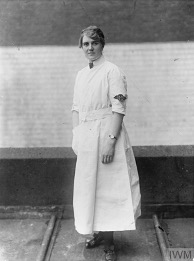On Friday this week (20thNovember 2020), the physiotherapy staff in the acute London NHS Trust where I work, along with other professional groups in the organisation, received a request asking for volunteers to administer Covid-19 vaccinations to the Trust’s workforce. Physiotherapists in the UK (along with other groups of healthcare professionals and retired clinicians) are being called on to contribute to the mass vaccination effort against Covid-191following rapid legislative change to allow a wider range of clinical staff to administer the vaccine2. The Trust’s vaccinator plan, to be rolled out in days, revolves around 84 x 12 hour shifts every week for two months in order to vaccinate its 14,000 staff (each staff member receiving x 2 doses of the vaccine, 28 days apart).
The scale and speed of the proposed programme, and the intensity of the work anticipated to ensure rapid mass delivery of a Covid-19 vaccine, is likely to be reflected up and down the UK and in countries around the world.
Mobilising a workforce such as this, which includes physiotherapists, shares some similarities with Britain’s response to managing the devastating numbers of Servicemen maimed and injured within weeks of the outbreak of World War 1. This response included the instigation of the Almeric Paget Massage Corps in Great Britain in August 1914. Staffed initially by masseuses from the Incorporated Society of Trained Massesuses (ISTM), members of the Corps provided massage, mobilisation, and electrotherapy to the injured3. Jean Barclay5tells us that of the 900,000 servicemen killed or injured during WWI, 73,000 were injured in the first four months, and hastily-constructed massage facilities saw as many as 24 masseurs and masseuses treat 650 each day (or around 25-30 patients per day for months). At the outset, all members of the Society were urged to enrol in the Corps by the chairman of the Council of the ISTM “to give whole or part time service whether voluntary or not”4. Archival sources highlight the hard work, the long days and the huge volume of treatment delivered by members of the Corps in a short time period3. By the end of October 1914, 110 masseuses had given 13000 treatments to 1500 patients5. Vaccinating nations against Covid-19 looks set to require something similar.
Interestingly, during other periods of mass inoculation over the last 100 years, physiotherapists have not been recruited to help with the effort. The polio, diphtheria, and tetanus vaccines, for instance, were handled and administered by nurses and doctors. By the 1950s when the vaccines were being administered, physiotherapy had become established as a distinct physical therapy discipline, and perhaps the demands of post-WWII rehabilitation meant that healthcare leaders were reluctant to give physical therapists license to perform injections. It will be interesting to see how the license to administer the Covid-19 vaccine will break down other barriers to trans-disciplinary practice in the future.
References:
- Join the NHS Covid-19 vaccine team. Available from: https://www.england.nhs.uk/coronavirus/join-the-nhs-covid-19-vaccine-team/[Accessed 28 November 2020].
- Regulation changes to allow more healthcare workers to administer vaccinations. Available from: https://psnc.org.uk/our-news/regulation-changes-to-allow-more-healthcare-workers-to-administer-vaccinations/[Accessed 28 November 2020]
- Nicholls, DA (2018) The End of Physiotherapy. London, Routledge.
- Wicksteed JH (1948) The growth of a profession: Being the history of the Chartered Society of Physiotherapy 1894-1945. London: Edward Arnold & Co.
- Barclay J (1994) In Good Hands: The history of the Chartered Society of Physiotherapy 1894-1994.Oxford: Butterworth-Heinemann.

